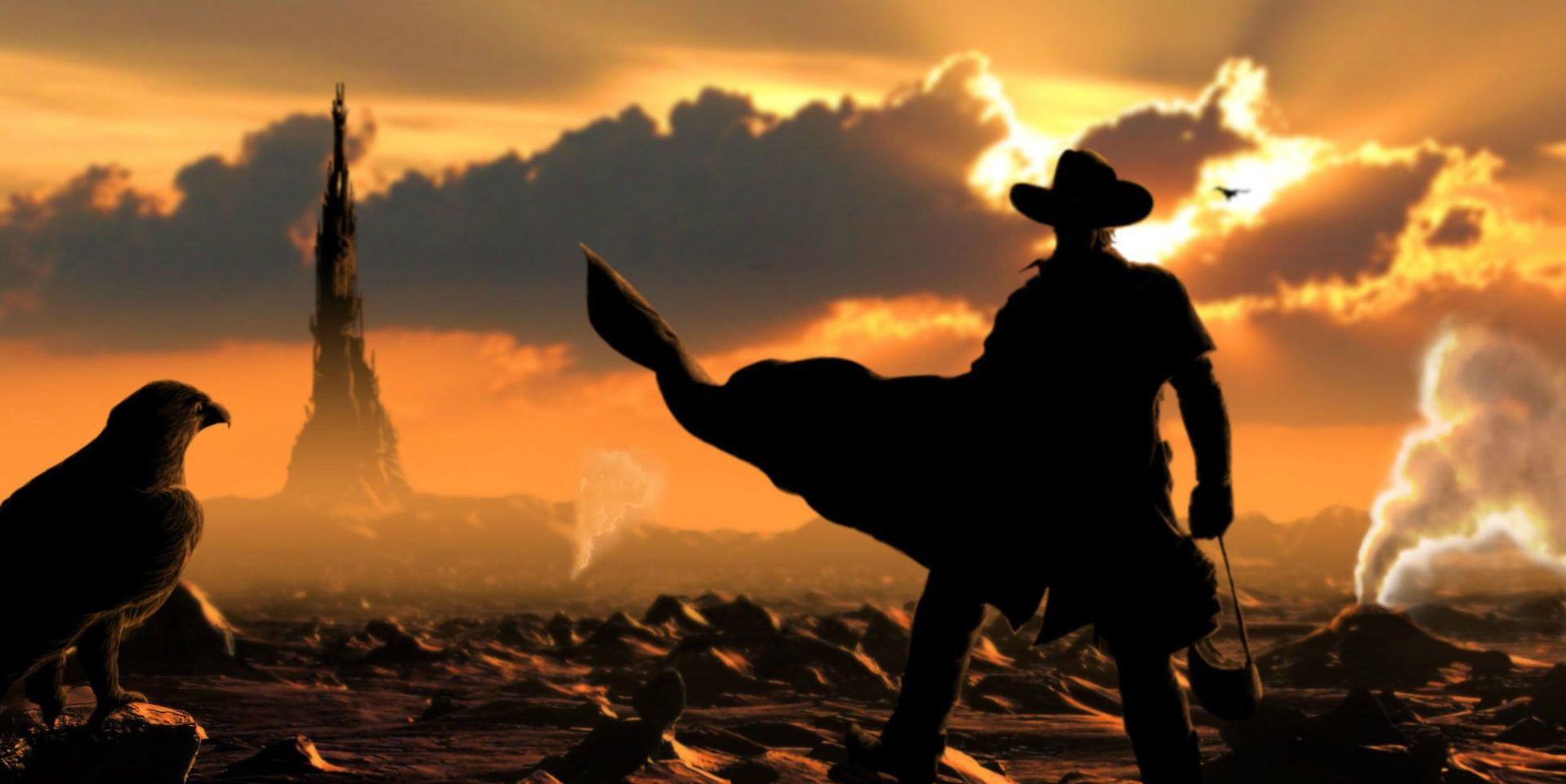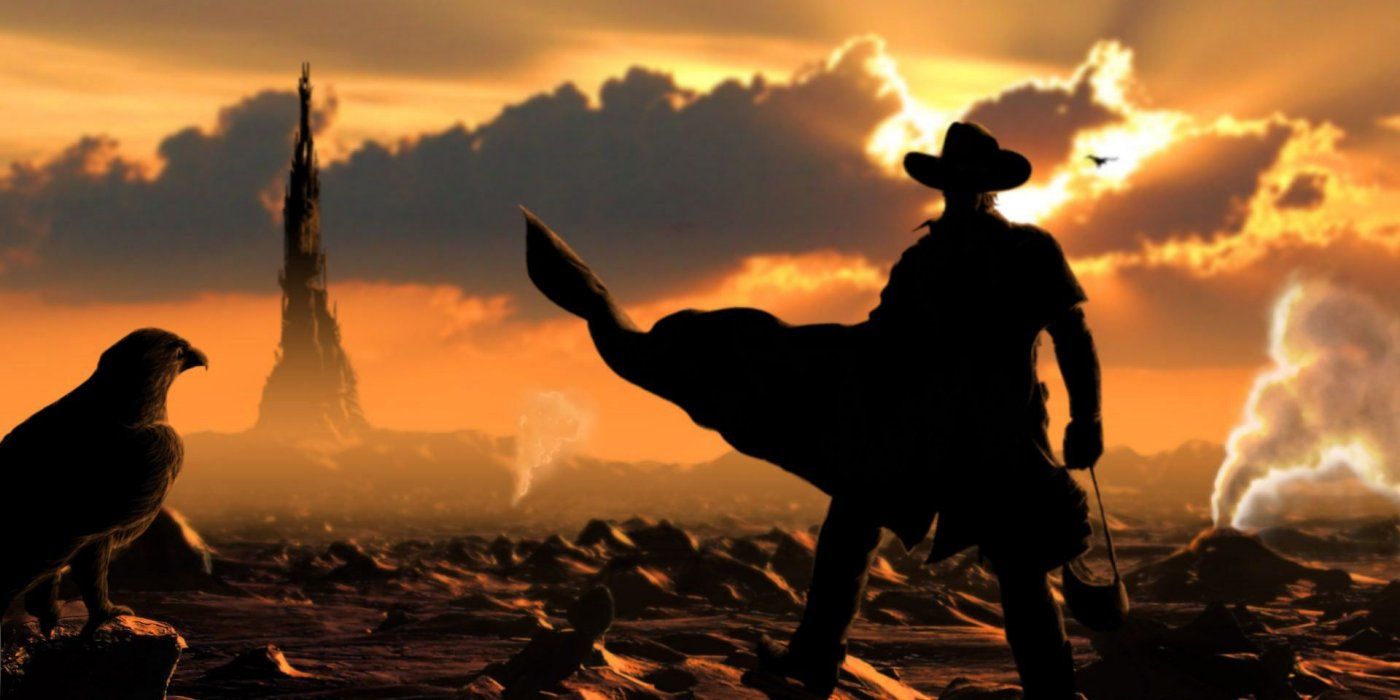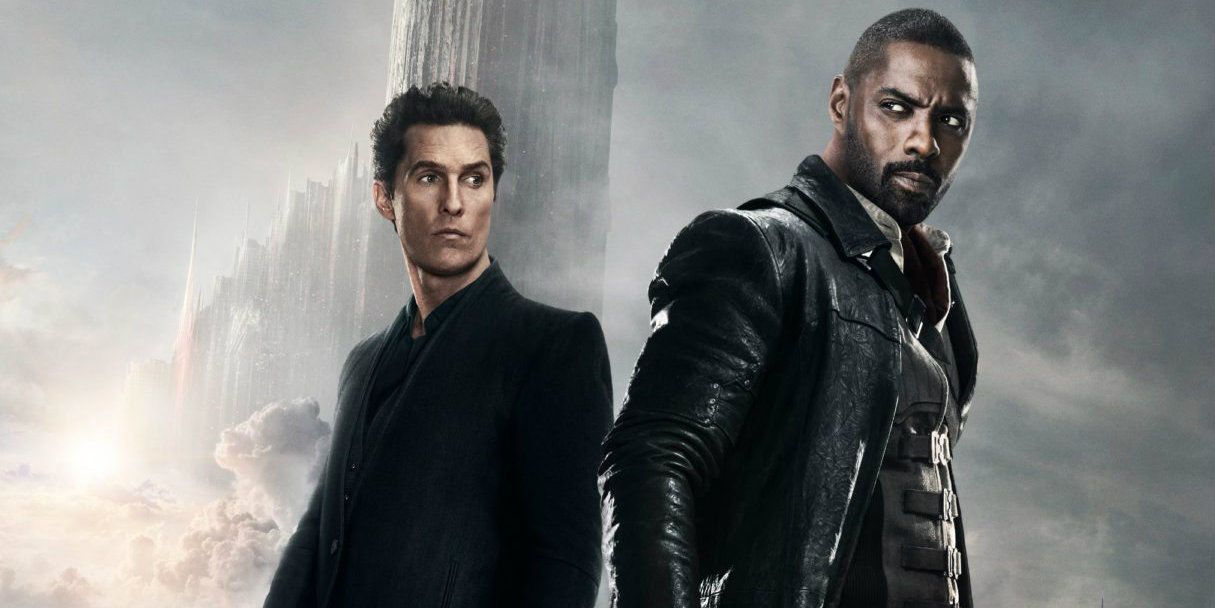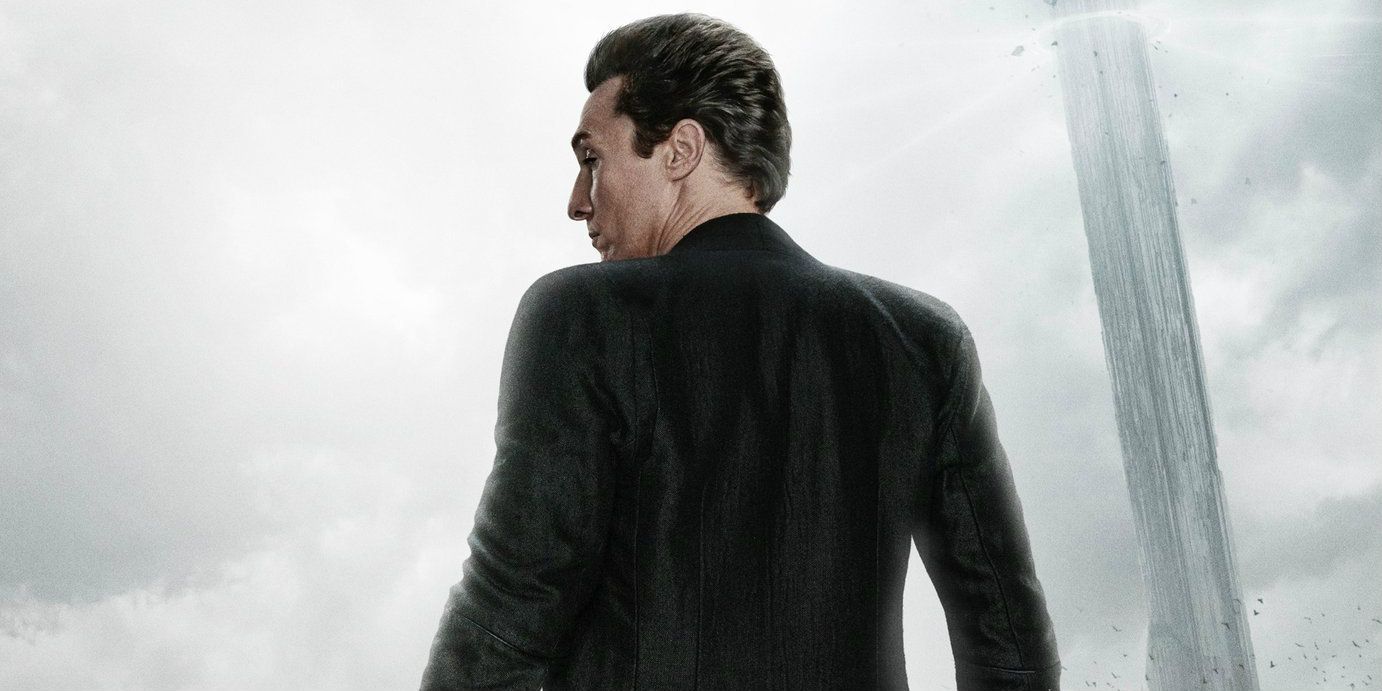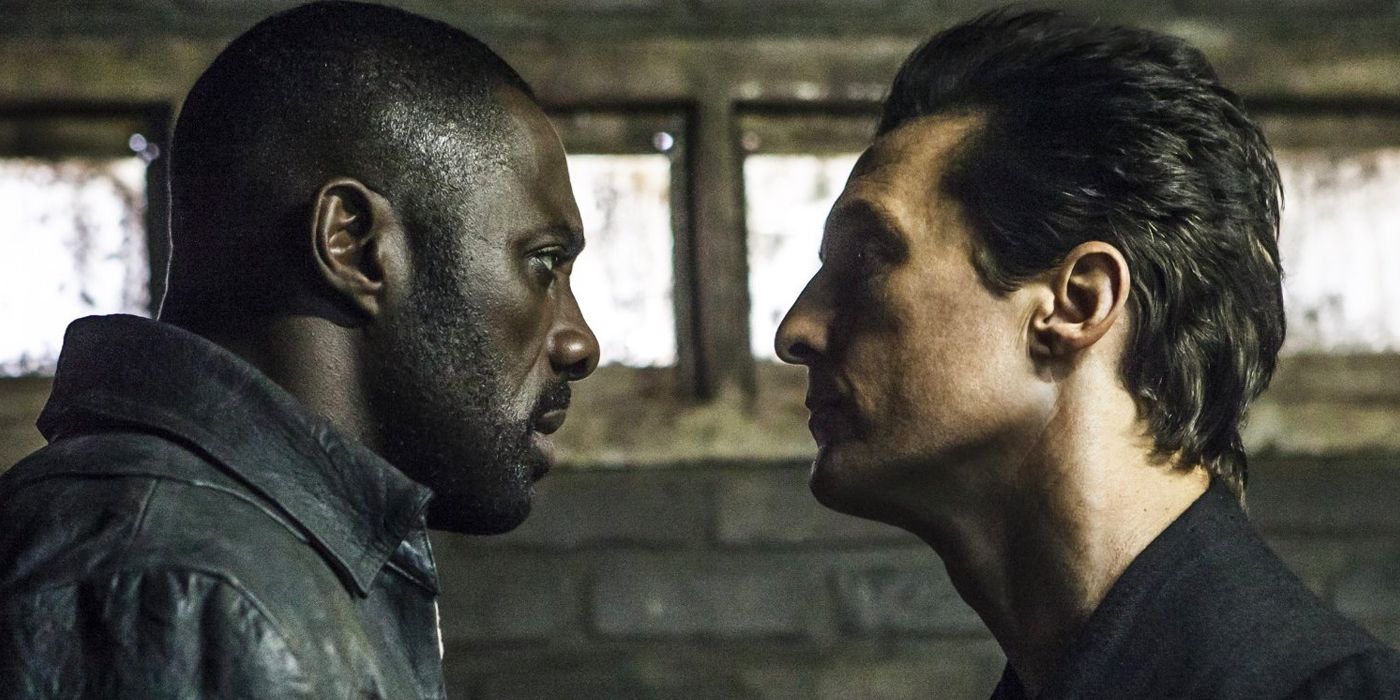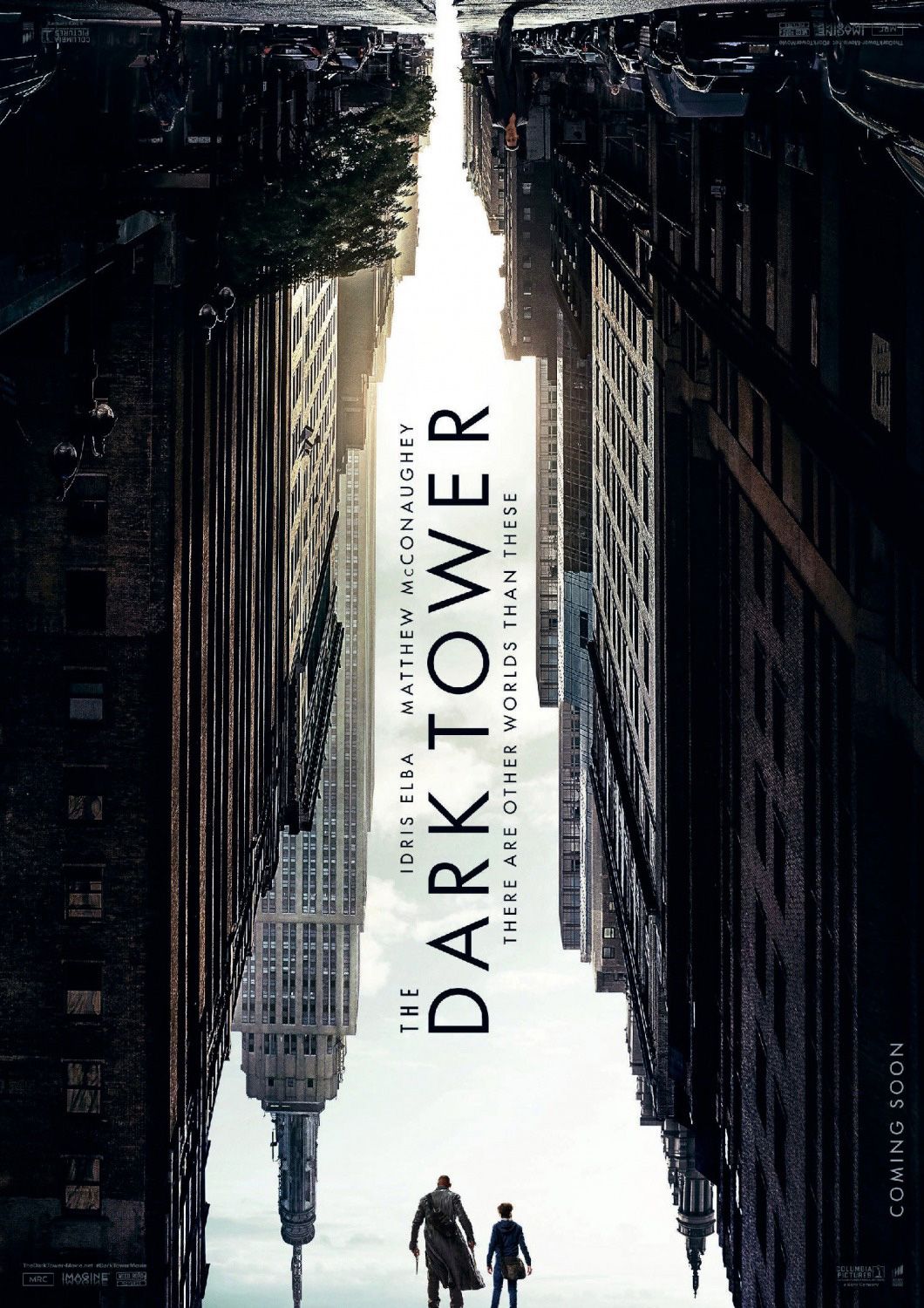Warning: Spoilers for The Dark Tower books and movie
-
The cinematic adaptation of Stephen King's The Dark Tower has finally arrived in theaters, though the movie might not be everything that fans of King's magnum opus had been hoping for. It was always going to be a difficult line for director Nikolaj Arcel to walk; fans of the book wouldn't want to waste precious time having the plot and structure explained to them, but to scrimp on that risks alienating newcomers to the franchise. The resulting movie sits somewhere between the two; The Dark Tower is not a faithful retelling of the first book in King's seven novel series, neither is is a retelling of all the books combined. Instead, The Dark Tower movie serves as another cycle of Roland's tale. Those who have read the books will know exactly what that means, but for those that haven't; think of it as a retelling of all the books with plenty of differences thrown in, and plenty taken out.
The essence of the tale remains the same, though; a battle of good versus evil. On the good side, is Roland Deschain (Idris Elba). Roland is the last in a long line of gunslingers hailing from Gilead in Mid-World. Essentially the role of a gunslinger is a kind of old-style Wild West Cowboy law enforcement, but Roland is exceptionally skilled and life has led him on a quest to reach the Dark Tower before the Man in Black. The Man in Black (Matthew McConnaughey), on the other hand, is firmly on the side of evil. He wants to destroy the tower, and, as is mentioned often in the books, he is both chasing and being chased by, Roland.
Confused? Let's start with the Tower itself. The Tower sits in the center of all existence. It is a real, tangible place, and from that place, eight beams flow. The beams connect to other worlds, and while the Tower still stands, and those beams remain intact, the universe exists. If those beams are damaged, or the Tower falls, all of existence will collapse. So Roland's quest to stop the Man in Black from carrying out his evil plan of destruction is pretty important, all things considered.
The logical question to ask, is why does the Man in Black want to destroy the Tower, and why does he hate Roland so much? To answer that, we have to go back to the very creation of the character, whom King introduced in another novel, 'The Stand.' There, he was called Randall Flagg, and he has appeared in various guises in many of King's stories, though it's important to remember that it's always the same character. Names he goes by include Ramsey Forrest, Russell Faraday, Richard Fannin, Richard Freemantle, and Robert Franq. King originally meant for The Man in Black, also known as Walter O'Dim, to be a different character for 'The Dark Tower' series, but he decided instead to bring back his popular embodiment of evil, and so, although he doesn't share the initials R.F., Walter O'Dim is the same person. In The Dark Tower novels, Walter goes by the nickname the Man in Black, while elsewhere, again, he is known by various nicknames including The Walkin' Dude, The Dark Man, and The Hardcase.
King describes his character as "An accomplished sorcerer and a devoted servant of the Outer Dark." The Man in Black has supernatural abilities, including prophecy and the ability to influence human and animal behavior. In The Dark Tower series, arguably, he is at his most evil. He makes his first appearance in the first line of the first book; "The Man in Black fled across the dessert and the Gunslinger followed." We later learn that Roland and Walter share a long history, and he has been Roland's nemesis since the latter was a boy.
In the flashbacks, Walter takes on the guise of Marten Broadcloak. This wasn't always the way; again, King conceived the two as separate characters, and in early editions of the novels, they were just that. However, The Dark Tower is a series that King has revisited and added to several times over the years, and in later editions, Walter and Marten were retconned into one. Marten had an affair with Roland's mother, and deliberately let Roland catch them in the moment, prompting Roland to take the gunslinger test early in the hopes that he could earn his guns and therefore kill Marten. Obviously, given how young he was, Marten hoped for Roland to fail the test and be exiled, but he passes well, though he then goes on to accidentally kill his mother. Roland bears this tragedy for much of his life, and in the first novel, The Dark Tower, Roland eventually catches up to Marten, now Walter, and the pair talk by a campfire in the desert. Roland slips into delirium, and wakes next to a pile of bones; Walter has faked his own death, unbeknownst to Roland.
From there, The Man in Black appears at various points in the subsequent novels, almost always with the sole intention of trying to kill Roland or prompt others into doing so. in The Drawing of the Three, the second novel, Walter appears in flashback as Randall Flagg. Roland recalls seeing Flagg with two men, Dennis and Thomas. These are characters from another King novel, The Eyes of the Dragon, where Flagg appears. In the third novel, The Wastelands,,' Walter appears as Richard Fannin and in the fourth, Wizard and Glass, he is Marten Broadcloak once more.
Though it takes a long time to get there, we do eventually learn that Walter/ Marten/ Randall/ The Man in Black, was born Walter Paddick, and after setting out age 13 for a life on the road, he was raped by another traveler. This, it is revealed, put Walter on track to his destiny; he learned magic as a form of defense, became quasi-immortal, and acquired the powers we see on display in The Dark Tower movie. His past is tragic; when he mentions that he's been to hell already, it's most likely he's referring to his life on the road and the incidents which turned him evil. He caused conflict, danger, and upset wherever he went, and, eventually, attracted the attention of the Crimson King.
Walter wants to kill Roland for many reasons, but mainly to avenge the death of Gabriella, Roland's mother, and to enable the Crimson King to destroy the Dark Tower. The Crimson King is above Walter in the pecking order of evil, though Walter is the one who appears most often in King's work. The Crimson King has one goal and one only; to see the Dark Tower fall, in order that he might rule in the chaos that follows. He delights in death and destruction, as does Walter, and he knows Walter will do his bidding. It's a reciprocal agreement, really; Walter will be his right-hand man for all eternity if that tower collapses. In our world, we learn in 'The Dark Tower' novels, The Crimson King is known as Satan. In a fit of madness, The Crimson King ran to the Tower and imprisoned himself there, and now he's unable to leave until it falls. For all his power, all his evil, Walter is really just a servant of The Crimson King, carrying out his orders because he's unable to do so.
That said, there's no denying that Walter is an extremely powerful man, especially if you take into account all of his actions across all of King's books. He is fueled by bitterness, despair, and anger; all powerful emotions and ones that have twisted the man he once was, into this unrecognizable evil man, hell-bent determined on bringing about not just the death of Roland Deschain, but of the entirety of existence.

